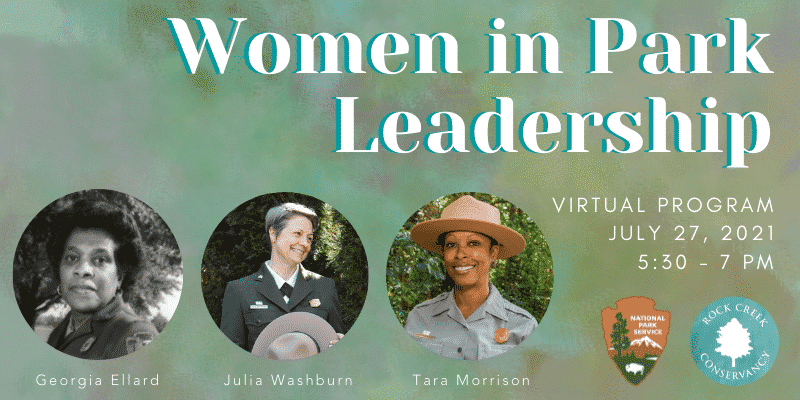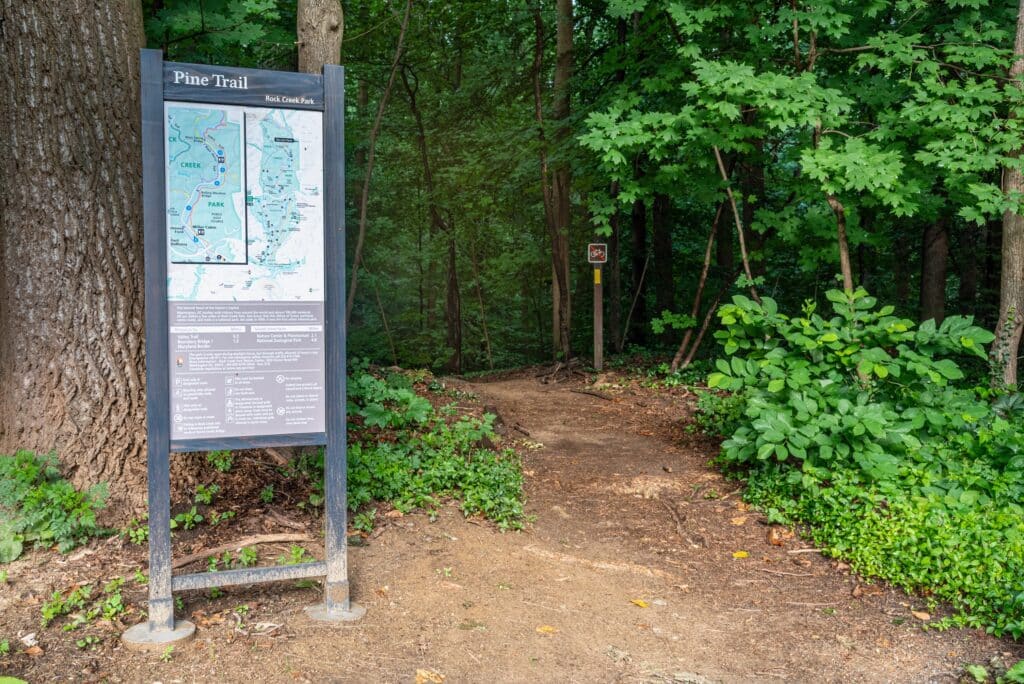BLOG / BLOG POST

Ensuring Green Spaces Access for All: A Conversation with Jeanne Braha
By Grace Edelen
Keeping the momentum from National Park’s Month in June, Green 2.0 continues the conversation on access to outdoor spaces with guest Jeanne Braha, Executive Director of Rock Creek Conservancy (RCC). RCC aims to restore and conserve Rock Creek Park, which is in the heart of Washington, DC. Braha and RCC are actively working to make green spaces more accessible to everyone.
Q: What are your thoughts on expanding access to nature? How does that manifest in the work of RCC?
Access to nature is important for the mental and physical health of all people. We’re really fortunate in DC to have lots of nature around us – in fact, DC once again ranked #1 on Trust for Public Land’s Park Score index this year. DC scored 88 percent on equity, which is pretty good, but until that’s 100 percent, our work is not done. RCC works to protect Rock Creek (National) Park, which offers about 2,000 acres of forested wilderness tucked into an amazing city.
I’m really interested in how park quality intersects with equity. We can easily see differences in, for example, the urban heat island effect on the east versus west side of the park; this is echoed in American Forest Foundation’s recent Tree Equity scores. We know there are fewer entrances on the east side of Rock Creek Park compared to the historically wealthier, whiter parts on the west side. Our new strategic plan focuses more on equity of access because of this. The solutions to these challenges require working across a lot of different agencies – even across borders to the Montgomery County part of the Rock Creek watershed, where the same trends continue.
Here’s what we’re doing right now:
- In partnership with the National Park Service, we offer virtual programs to explore the intersection of race, history, and Rock Creek.
- We prioritize those eastern park entrances during sign installation at trailheads or near park resources.
- We’re thrilled to see the possibility of upper Beach Drive’s permanent closure to through traffic, expanding access. This would transform about four miles of land with full tree canopy for everyone, with fairly easy access from the east side.
- We are working on an equity analysis of our programs and organization this year to build our internal competencies. This way, we can put resources where they are needed.


Q: How does RCC’s people-powered restoration advocate for diversity and inclusion within the environmental movement?
People-powered restoration is really about giving people the opportunity to connect with these special, iconic places as a way to catalyze long-term stewardship of our parks and watersheds. Our mission is to restore Rock Creek and its parklands for all people to appreciate and protect, as seen in our Recreate Responsibly program. The underlying challenge is pollution created by humans. We use every opportunity we have to invite all of the watershed’s residents to participate and be part of the clean-up effort. This summer, we are offering evening activations of park spaces that are just plain fun–ranging from a DJ, ice cream trucks, bubbles and chalk, to plenty more exciting activities!

I’m really interested in how park quality intersects with equity. We can easily see differences…we know there are fewer entrances on the east side of Rock Creek Park compared to the historically wealthier, whiter parts on the west side.
— Jeanne Braha
Income map shown in 2019 dollars inflation adjusted by CPI. 1970-2010 data from IPUMS National Historical GIS, University of Minnesota.
Q: Can you briefly explain how Rock Creek Conservancy Corps (RC3) works and your ultimate goal of the program?
Rock Creek Conservation Corps (RC3) is a six-week summer program that provides a first conservation (often first overall) job to local youth. We are really excited this year to have our first Montgomery County crew, complementing a long-standing program in partnership with three DC high schools that are east of the park. RC3 takes people-powered restoration and keeps it going for six full weeks – which allows time for these young people to build a deep connection to nearby nature and discover ways they can become Rock Creek stewards. After only a few years of this programming, we have seen some RC3 alumni choose to major in environmental or related sciences in college. Several have returned for more than one summer or sent a younger sibling or cousin!
Q: Is there anything else that you would like to touch on that we didn’t ask?
For DC area readers, I would flag the many recreational and service opportunities offered by RCC: https://www.rockcreekconservancy.org/what-we-do/upcoming-events.
For more information about Jeanne Braha, follow Jeanne on Twitter @JeanneBraha. and follow Rock Creek Conservancy @LoveRockCreek.
To learn more about Rock Creek Conservancy’s mission, visit rockcreekconservancy.org and follow on Twitter @LoveRockCreek.
